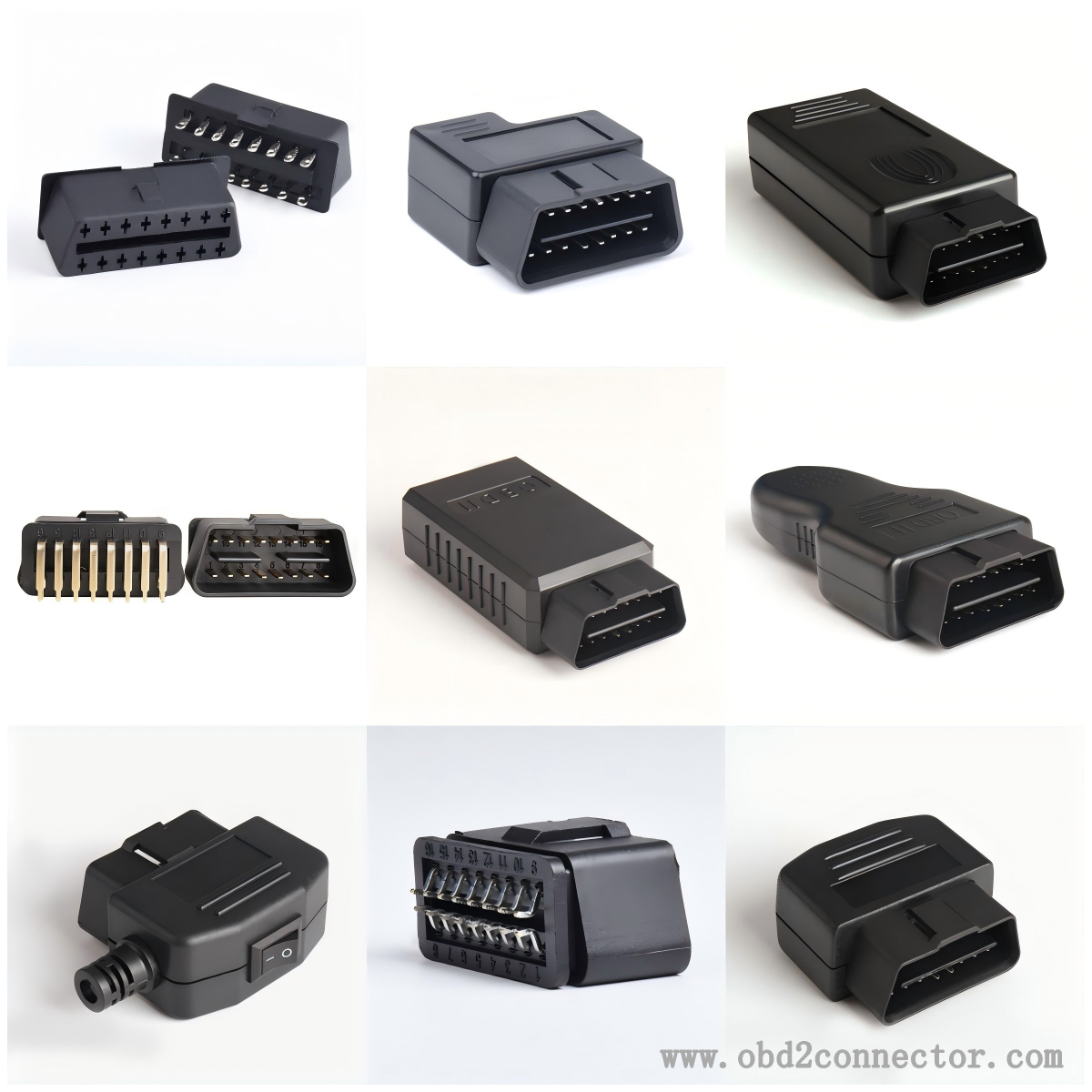What is the working principle of OBDII elbow connector?
The OBDII elbow connector itself does not directly participate in complex tasks such as data processing. It mainly serves as a physical connection interface to achieve reliable connection between diagnostic equipment and vehicle OBD-II system, ensuring smooth data transmission. Its working principle can be understood from two key aspects: electrical connection with the vehicle OBD-II system and data transmission:
Electrical connection principle
Pin definition and function: The OBDII elbow connector follows the pin definition of the OBD-II standard, generally having 16 pins, each with a specific function. This includes power pins, ground pins, signal transmission pins, etc. The power pin provides vehicle power to the connected diagnostic equipment, ensuring that the equipment can function properly. The grounding pin provides a stable reference potential for the entire circuit, ensuring the stability and safety of the electrical system.
Establish electrical circuit: When the OBDII elbow connector is inserted into the vehicle's OBD-II interface, the pins of the connector make close contact with the corresponding contacts inside the interface, thereby establishing a complete electrical circuit. This enables electrical connection between diagnostic equipment and the electronic control unit (ECU) of the vehicle, providing a physical basis for data transmission.

Principles of Data Transmission
Protocol conversion: The ECU of the vehicle uses specific protocols to store and transmit data, while diagnostic devices produced by different manufacturers may use different communication protocols. The OBDII elbow connector does not directly perform protocol conversion, but it provides a standard connection interface that enables diagnostic devices that comply with the OBD-II standard to communicate with the vehicle ECU. During this process, the diagnostic equipment will send request instructions according to the OBD-II protocol and transmit them to the vehicle ECU through the connector.
Data transmission and reception: After receiving the request command sent by the diagnostic equipment, the vehicle ECU will extract the corresponding data according to the command requirements and transmit the data back to the diagnostic equipment through the connector according to the OBD-II protocol. The signal transmission pins in the connector are responsible for accurately and quickly transmitting these data signals to the diagnostic equipment. After receiving the data, the diagnostic equipment decodes and analyzes it, and finally displays it in a form that users can understand, such as fault codes, vehicle operating parameters, etc.